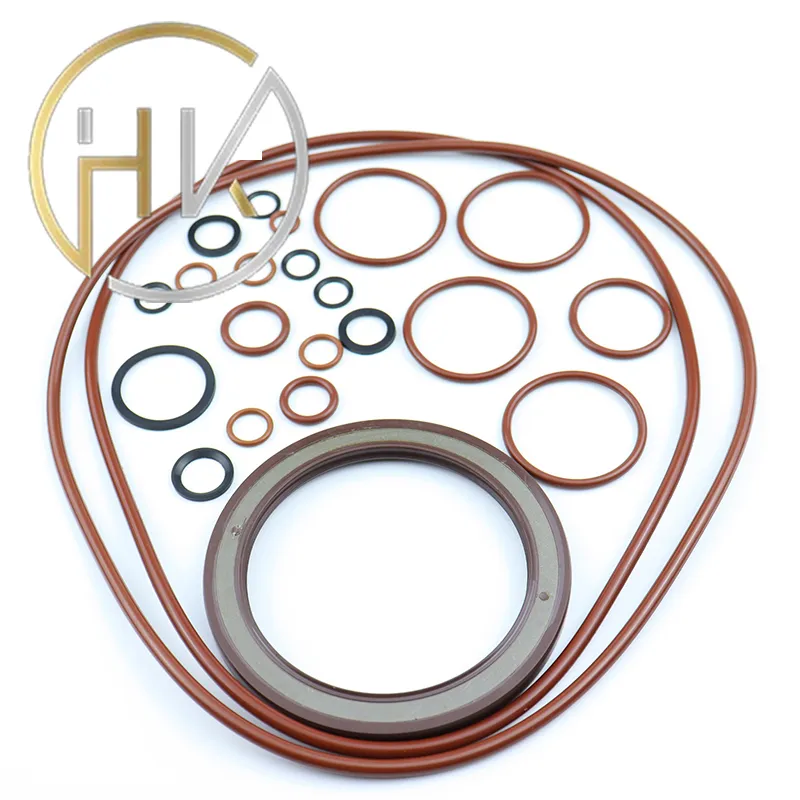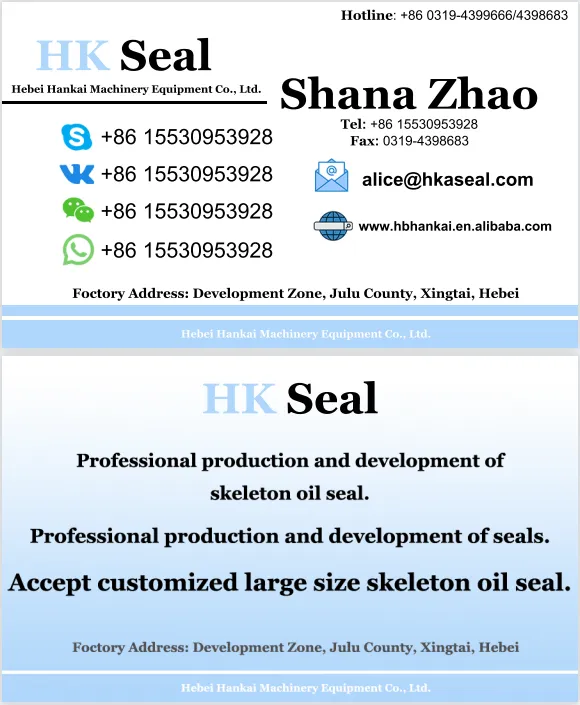Peb . 02, 2025 05:27 Back to list
Standard High Pressure TCV Type Hydraulic Oil Seal


5. Wear Rings Although technically not seals, wear rings play an instrumental role in guiding the piston and rod, preventing metal-to-metal contact that could compromise seal integrity. They provide lateral stability, ensuring seals remain effective under transverse loading conditions. Each type of hydraulic oil seal is crafted from specific materials such as elastomers, PTFE, or polyurethane, selected based on the operational demands like temperature, pressure, and fluid compatibility. Elastomeric seals, for instance, offer excellent flexibility and resistance to thermal expansion, making them suitable for a range of temperatures and pressures. Alternatively, PTFE offers exceptional chemical resistance and low friction, ideal for high-speed applications. The choice of hydraulic oil seal must be tailored to the specific operational conditions and requirements of the system. Misapplication or selection of inappropriate seal types can lead to premature system failure, increased maintenance costs, and unnecessary downtime. Therefore, being informed about the latest developments and innovations in seal materials and design is paramount. Moreover, expert installation and regular maintenance are as crucial as correct seal selection. Proper installation ensures that the seals fit perfectly without undue stress, while regular maintenance checks help identify early signs of wear or damage, preventing potential failures. Trust in a supplier or manufacturer with a proven track record of quality and innovation is also essential. Reputable manufacturers not only provide high-quality products but also offer expert guidance tailored to specific industry needs, enhancing the reliability and efficiency of hydraulic systems. In conclusion, hydraulic oil seals, though often underappreciated, are indispensable in safeguarding the performance and durability of hydraulic systems. Understanding their types, applications, and maintenance can significantly contribute to maximizing machinery lifespan and optimizing operational efficiency. With continuous advancements in seal technology and materials, staying informed is critical to leveraging their capabilities fully.
-
The Trans-formative Journey of Wheel Hub Oil Seals
NewsJun.06,2025
-
Graphene-Enhanced Oil Seals: Revolutionizing High-Pressure Oil Sealing
NewsJun.06,2025
-
Future of Hydraulic Sealing: Advanced Intelligent TCN Oil Seals
NewsJun.06,2025
-
Don’t Let a Broken TCV Oil Seal Ruin Your Day
NewsJun.06,2025
-
Bio-Inspired Dust Seals for Better Sealing Performance
NewsJun.06,2025
-
Biodegradable and Sustainable Hydraulic Seal Materials
NewsJun.06,2025
-
Top Oil Seal Solutions for Your Industrial Needs
NewsMay.22,2025
Products categories
















